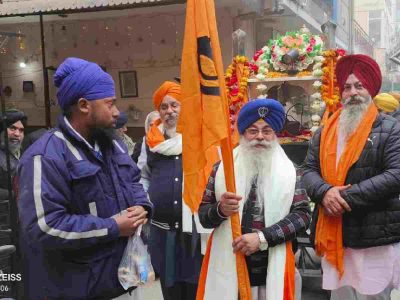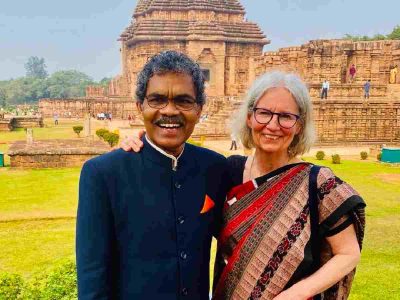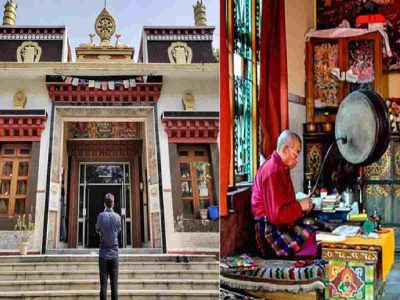Despite ambitious commitments, agencies participating in the Archaeological Survey of India’s (ASI) ‘Adopt A Heritage 2.0’ programme have largely failed to deliver on their promises, leaving many of the adopted heritage sites in Delhi with minimal improvements.
Grand promises, minimal execution
Under this initiative, ASI signs Memorandums of Understanding (MoUs) with various agencies to adopt, maintain, and develop monuments across India. However, a year after its launch, many of these private entities have focused more on routine upkeep rather than providing substantial enhancements.
In Delhi, twelve monuments were adopted with an expected investment of Rs 1.5 crore over five years. Despite this, most of the promised upgrades remain unrealised. Redtape Ltd recently adopted four additional monuments—Delhi Gate, Kashmere Gate, Mori Gate, and Ajmeri Gate—bringing the total number of adopted sites in Delhi to sixteen.
“These gates will receive facilities such as garbage disposal, ramps, wheelchairs, signage, lighting, CCTV cameras, app-based guides, and more,” an ASI official explained. However, a ground report by Patriot found that these amenities remain largely absent.
Agencies lagging behind
The programme has seen participation from major corporations, with Indigo adopting the tomb of Abdul Rahim Khan-I-Khanan in Nizamuddin and Bisleri International partnering with ASI to maintain water bodies across India. Other notable adoptions include:
- Balban’s Tomb, Jamali Kamali Mosque, Rajon ki Baoli, and Gandhak ki Baoli in Mehrauli Archaeological Park.
- Purana Qila, Humayun’s Tomb, and Safdarjung Tomb by the Sabhyata Foundation.
- Qutub Minar by Ease My Trip Foundation and Agrasen ki Baoli by Zee Akash News Pvt Ltd.
- Jantar Mantar by Powerlinks Transmission Ltd (a joint venture between Tata Power Company Ltd and Power Grid Corporation of India Ltd).
- Hauz Khas monuments by Tata Power Trading Co Ltd.
With over 20 MoUs signed across India and 69 monuments adopted, agencies claim they are working on improving visitor experiences. However, the reality on the ground tells a different story.
Limited impact on heritage sites
Those partnering with ASI have been designated as Smarak Sarathi (responsible for providing all facilities) and Smarak Sathi (undertaking selective work). Despite these designations, many agencies have done little beyond basic maintenance.
For instance:
- Jantar Mantar has only received two PET bottle crusher machines, four wheelchairs, and one first aid box.
- Hauz Khas now has dustbins, two wheelchairs, two PET bottle crusher machines, and a first aid box.
- Purana Qila has plans for boating facilities, but no implementation has begun.
Other adopted monuments are merely being cleaned and maintained without meaningful improvements in visitor facilities.
Unmet commitments
According to the MoUs, these sites were supposed to receive:
- Hygiene facilities such as toilets, drinking water kiosks, baby care rooms, waste management systems, and shoe covers.
- Accessibility features like pathways, ramps, wheelchairs, multilingual signage (including braille), directional signage, Wi-Fi facilities, and designated parking areas.
- Safety measures including first aid stations, CCTV surveillance, adequate lighting (including illumination powered by green DG sets and renewable energy sources), and cloakrooms.
- Additional features such as souvenir kiosks, cafeterias, audiovisual/multimedia rooms, audio guides/app-based guides, cultural/light and sound shows, and enhanced landscaping.
However, as of now, agencies have largely failed to deliver these promised amenities.
ASI’s response
ASI officials insist that implementation is a gradual process. “It will take some time for these agencies to provide the promised facilities,” said an ASI official. The organisation also emphasised the importance of collaboration with external partners. “Signing MoUs represents a commitment by these agencies to adopt specific monuments, contribute to their maintenance, and improve their presentation to the public,” the official added.
Also Read: Purana Qila’s light and sound show delayed amid revamp plans
Yet, a year into the programme, the lack of visible progress raises concerns about the effectiveness of private agency participation in heritage conservation. With many of the commitments still unfulfilled, questions remain about whether corporate involvement in India’s heritage preservation is truly benefiting these historical sites or simply serving as a branding exercise for the agencies involved.





